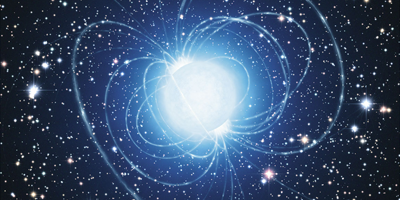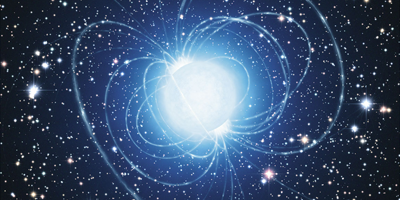Internal Magnetic Field Causes Neutron Star to Go Wobbly
Magnetars, a type of neutron star, produce colossal external magnetic fields, with magnitudes as high as tesla (a billion times stronger than the most powerful magnets on Earth). Possible evidence of an even stronger internal field comes from recent x-ray observations of a particular magnetar. Writing in Physical Review Letters, the authors report detection of a time-varying x-ray signal and conclude that it indicates a wobble, or precession, in the magnetar’s rotation caused by an internal field of tesla.
The typical magnetar emits a strong beam of x rays, which we observe as pulses each time the compact object rotates. The most accepted explanation for this emission is that it arises from a huge polar magnetic field that originates—according to one theory—from an initial field that gets “wound up” during the stellar collapse that forms the neutron star. This scenario predicts that an even stronger magnetic field in the shape of a donut coils around the interior of the magnetar, but no measurements of this so-called toroidal field have previously been made.
Kazuo Makishima from the University of Tokyo in Japan and his colleagues have now captured a hint of the toroidal field. They analyzed data from the Japanese Suzaku satellite on the magnetar 4U 0142+61, which emits x-ray pulses every seconds. To their surprise, the team found that the pulse arrival time in hard x rays was not constant—sometimes coming early, sometimes late. To explain this, they assumed that a strong toroidal field deforms the magnetar into a prolate shape, like a football, which wobbles as it spins. The hard x-ray data could be explained if the wobble frequency is a tiny fraction ( ) less than the spin frequency. This wobbling motion might generate detectable gravitational waves. – Michael Schirber





